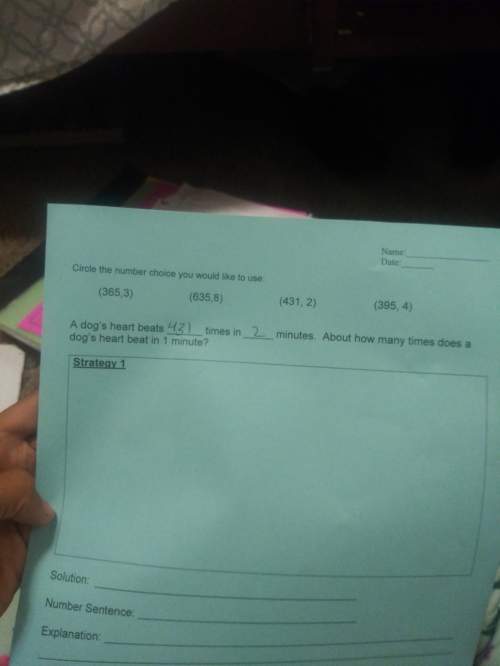
Physics, 17.11.2019 20:31 deedoe2679
The table below shows the same force acting on various masses and the resulting acceleration. review the table.
mass/acceleration
100 kg 2 m/s2
75 kg 2.6 m/s2
60 kg 3.3 m/s2
40 kg 5 m/s2
20 kg 10 m/s2
5 kg 40 m/s2
what is the relationship between mass and acceleration as supported by the data table when acted on by a constant force?
a.) mass is inversely proportional to acceleration
b.) mass is directly proportional to acceleration
c.) acceleration decreases when mass decreases
d.) mass is unrelated to acceleration and motion

Answers: 1
Another question on Physics

Physics, 21.06.2019 17:00
After a car's engine has been running for a while, if you stand near the car's engine you can often feel heat coming from the engine as a result of a. radiation b. convection c. conduction
Answers: 1

Physics, 22.06.2019 02:30
Which is an example of gaining a static charge by conduction? a) rubbing a balloon against your hair. b) shuffling your shoes across a carpet. c) bringing a charged rod near an electroscope. d) touching your car on a cold day and getting a shock.
Answers: 1

Physics, 22.06.2019 14:20
4r-134a enters the condenser of a residential heat pump at 800 kpa and 50°c at a rate of 0.022 kg/s and leaves at 750 kpa subcooled by 3°c. the refrigerant enters the compressor at 200 kpa superheated by 4°c determine (a) the isentropic efficiency of the compressor, (b) the rate of heat supplied to the heated room, and (c) the cop of the heat pump. also, determine (d) the cop and rate of heat supplied to the heated room if this heat pump operated on the ideal vapor-compression cycle between the pressure limits of 200 and 800 kpa. (0.757, 4.37 kw, 5.12, 6.18, 3.91 kw)
Answers: 3

Physics, 23.06.2019 01:00
Learning goal: to understand newton's 1st law. newton's principia states this first law of motion: an object subject to no net force maintains its state of motion, either at rest or at constant speed in a right line. this law may be restated as follows: if the sum of all forces acting on an object is zero, then the acceleration of that object is zero. mathematically this is just a special case of the 2nd law of motion, f⃗ =ma⃗ , when f⃗ =0. when studying newtonian mechanics, it is best to remember the 1st law in two ways: if the net force (i.e., sum of all forces) acting on an object is zero, the object will keep moving with constant velocity (which may be zero). if an object is moving with constant velocity, that is, with zero acceleration, then the net force acting on that object must be zero. complete the following sentences to see if you can apply these ideas. part a if a car is moving to the left with constant velocity, one can conclude that
Answers: 1
You know the right answer?
The table below shows the same force acting on various masses and the resulting acceleration. review...
Questions



Mathematics, 21.12.2020 22:30


Mathematics, 21.12.2020 22:30

Physics, 21.12.2020 22:30

Mathematics, 21.12.2020 22:30


Biology, 21.12.2020 22:30

Mathematics, 21.12.2020 22:30

Mathematics, 21.12.2020 22:30

English, 21.12.2020 22:30




Mathematics, 21.12.2020 22:30

Mathematics, 21.12.2020 22:30






